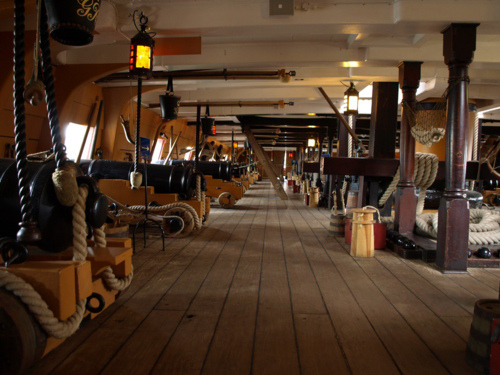I didn’t expect to find such a vivid example of how the application of what you know allied to an entrepreneurial spirit can make such a difference.
Here’s the background: By the time of the Battle of Trafalgar in 1805 the rate of fire from a cannon on the British Fleet was every 90 secs whereas for that of the enemy it was 5 minutes; a major factor in the competitive advantage of the British Fleet and the ensuing victory.
Here’s why:
Captain Charles Douglas, commander of the 90 gun ship Duke in 1778, had such great confidence in the efficiency of the flintlock for firing guns that he equipped his ship with them out of his own purse. When Douglas became captain of Lord Rodney’s flagship Formidable (90 guns) in April 1782, he demonstrated his superior rate of fire and hitting power in the victory over the French at the Battle of the Saints in the West Indies. Douglas’s son, Major General Sir Howard Douglas, improved the gun lock system by introducing a double headed hammer to house the flint. This made it unnecessary to change flints frequently during action as this new form of hammer could be turned through 180 degrees to engage the second flint.
What that quote omitted was that the French forces were the inventors of the original flintlock and indeed had trialled (without much success) its introduction to the fleet.
On the British side this became a grass roots incremental change programme spread by word of mouth that ultimately became ‘corporate’ policy. Individual Captains’ who were often quite wealthy paid for the enhancements to the guns on their vessels and were able to see significant improvements in productivity. By the time of the great sea battles of the late 18th and early 19th century most British ‘ships of the line’ were fitted with these devices with devastating impact.
It struck me as I walked around HMS Victory that today many organisations aren’t aware of what others in different areas of their business do and are often not involved in the redesign of process. Indeed two of the recurring comments we hear are “I didn’t know they did that” or “yet another top down HO initiative we pay lip service to”.
This example spoke to me of the value of knowledge sharing and the need to engage rather than impose change. I hope you agree?

flickr.com/4142/4737534619_aa7c70470e_b.jpg

